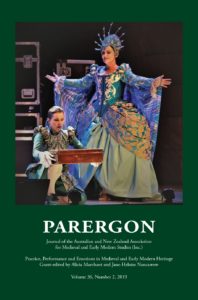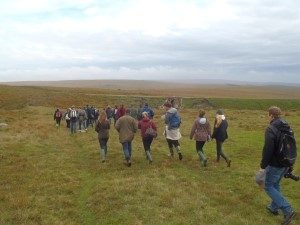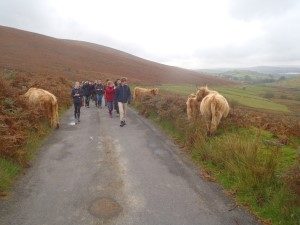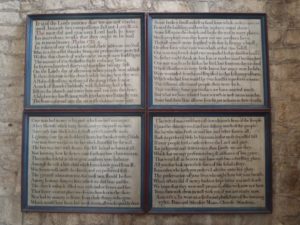 ANZAMEMS is delighted to advise researchers that the latest issue of the Association’s journal Parergon is now out. Special Issue 36.2, Practice, Performance and Emotions in Medieval and Early Modern Heritage, guest-edited by Alicia Marchant and Jane-Héloïse Nancarrow, features 6 original research articles, a scholarly introduction, a special roundtable contribution, and over 50 book reviews.
ANZAMEMS is delighted to advise researchers that the latest issue of the Association’s journal Parergon is now out. Special Issue 36.2, Practice, Performance and Emotions in Medieval and Early Modern Heritage, guest-edited by Alicia Marchant and Jane-Héloïse Nancarrow, features 6 original research articles, a scholarly introduction, a special roundtable contribution, and over 50 book reviews.
ANZAMEMS members will receive print copies of Parergon 36.2 shortly, while digital content can be accessed via Project MUSE.
Here is a preview of the content available in the issue:
Introduction: Practice, Performance, and Emotions in Medieval and Early Modern Heritage
Alicia Marchant, Jane-Héloïse Nancarrow
Between Realism and Re-enactment: Navigating Dramatic and Musical ‘Problems’ in Voyage to the Moon
Joseph Browning and Jane W. Davidson
How do practitioners understand the relationship between performance, history and emotion in Western art music? Based on an ethnographic study of a contemporary pasticcio opera, we take the rehearsal room as an important, yet often overlooked, site in which creative artists imagine and perform different relationships with their musical and cultural heritage. Focusing on the interplay between two performative modes, which we call realism and re-enactment, we describe how the creative team navigated various dramatic and musical challenges associated with the opera, generating a final production that was ambiguous and multi-layered in its
emotional registers and attitudes towards the past.
After Lives: Considering Disembodied Costume via Medieval Copes and Nick Cave’s Soundsuits
Janet Lee and Jo Merrey
Costuming a body for performance both defines and erases boundaries between performer and audience. Historically distinct and creatively oppositional, medieval copes and the soundsuits of contemporary artist Nick Cave work to transcend the everyday and reimagine the self. As the garment subsumes the wearer, the performer’s ‘translated’ presence engages the audience/viewer. But what of costume divested of performer? What is embodied in performance shifts in a costume’s museum afterlives. Postperformance costumes signal vacancy; an uncanny absence. Displacing the performer allows for the renegotiation between object and viewer. Tracememories of performance linger, reconfigured via the costume’s framing and circumstances of viewing.
Hidden Heritage: Concealment, Reuse, and Affective Performance in Historic Buildings and Digital Heritage
Jane-Héloïse Nancarrow
This article considers material heritage of the Middle Ages and early modern period which was deliberately obscured from public view, exploring this concept in light of concealed objects’ emotional impact and cultural meaning, the status of such objects as part of a ‘performance
of concealment’, and the role that concealment played in the creation of heritage. A series of architectural and smaller-scale digital heritage case studies articulate the complex ways that concealment shaped meaningful heritage narratives, both in the past and today—particularly as concealed material culture was often remediated or reused from other heritage settings.
Myth, Reality and Revelation: The Performance of Divine Power on Dartmoor
David C. Harvey and Joanne Parker
This article explores the nexus between the folk heritage of an unusual archaeological site, an early modern account of ‘ball lightning’, and the literary construction of an affective atmosphere. It examines how a violent storm in October 1638 provided a symbolic reservoir for narrative accounts of both the performance of God’s power and the Devil’s trickery, thereby
providing lessons for civil conduct alongside explanations of some unusual archaeological features. Tracing a biographical life history of how the storm has been remembered at different periods since the event, we chart how various narratives of landscape can unfold over several centuries.
Hearing Early Modern Battles: Soundscape Audio as a Way of Recreating the Past
Dolly MacKinnon
This article provides a model of analysis for examining museum exhibitions that specifically incorporate soundscapes for early modern battle histories: one is a local museum at Radway, England, that commemorated the Civil War Battle of Edgehill (1642), and the other is the National Museum of Scotland’s exhibition ʻBonnie Prince Charlie and the Jacobites’ that includes the 1745 rising that culminated in the Battle of Culloden (1746). Using film music diegesis, the article analyses the ways in which emotions are generated, performed and produced through soundscapes created for early modern battlefields in museums, demonstrating how gendered representations of the past can be overturned and democratized by soundscapes.
‘Three cheers to the old apple tree!’: Wassailing and the Affective Performance of Heritage
Alicia Marchant
The ancient practice of wassailing to apple trees has had global resurgence in recent years, including in Tasmania where it is performed at the Huon Valley Mid-Winter Fest. First recorded at Fordwich (England) in 1585, wassailing is performed annually on Old Twelfth Night and involves a parading group moving noisily between orchards. Taking the Huon Valley wassail as a focus, I will examine the performative elements of the modern wassail, tracing a genealogy of practice, to ask: what happens when wassailing is transplanted to Tasmania? What sorts of ‘pasts’ are recalled, and what emotional work does the wassail performance do?
Parergon Roundtable
Future/s Medieval: Perspectives from the ANZAMEMS Community
Susan Broomhall, Andrew Lynch, Clare Monagle, Amanda Power, Helen Young, Louise D’Arcens, Lindsay Diggelmann, Chris Jones
This roundtable responds to the wide-ranging discussions within and beyond the ANZAMEMS community at present about the ways in which our field is currently being understood and used by those in the broader community, as well as how these developments may provoke new lines of enquiry within medieval and medievalism scholarship.
Members of our community, scholars of the medieval, were invited to contribute
short papers reflecting on new directions and pressure points for medieval studies.
These encompass considerations within the academy and as the medieval is
understood and employed beyond it, and indeed as these are in dialogue with each other.
Parergon welcomes article submissions on all aspects of medieval and early modern studies. We are especially interested in material that crosses traditional disciplinary boundaries and takes new approaches. For more information and submission guidelines, visit the Parergon website.




